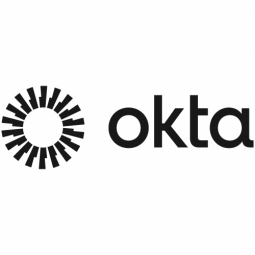Customer Company Size
Large Corporate
Region
- Asia
- Pacific
Country
- India
- New Zealand
- Taiwan
Product
- Okta Identity Cloud
- Okta Customer Identity
- FastPass
Tech Stack
- Multi-Factor Authentication
- Single Sign-On
- Zero Trust
Implementation Scale
- Enterprise-wide Deployment
Impact Metrics
- Customer Satisfaction
- Digital Expertise
- Productivity Improvements
Technology Category
- Cybersecurity & Privacy - Identity & Authentication Management
- Platform as a Service (PaaS) - Connectivity Platforms
Applicable Industries
- Finance & Insurance
Applicable Functions
- Business Operation
Services
- Cloud Planning, Design & Implementation Services
- Cybersecurity Services
About The Customer
AIA Group is a leading insurance company with a 100% focus on the Asia-Pacific region. With over a century of experience, AIA has been instrumental in helping people across Asia plan for their future, offering services ranging from affordable life insurance in Vietnam to wealth management for ultra-high-net-worth individuals in Singapore. The company has grown into the largest Pan-Asian insurance group, employing over 20,000 people across diverse markets such as Brunei, Taiwan, India, and New Zealand. AIA's commitment to innovation and digital transformation is evident in its recent shift from on-premise infrastructure to a hybrid and multi-cloud architecture, aimed at enhancing agility and resilience in a fast-moving market.
The Challenge
AIA Group faced a significant challenge in transitioning from a 100% on-premise infrastructure to a hybrid and multi-cloud architecture. The primary concern was ensuring frictionless cloud workflows and data-sharing while maintaining 'bank-level security' for over 20,000 employees across Asia. The existing legacy identity management system was cumbersome and lacked multi-factor authentication, which was critical for the sensitive data handled in the global insurance industry. The need for a robust identity and access management solution became apparent as AIA sought to secure its cloud transformation and enable seamless navigation among disparate environments.
The Solution
AIA Group selected Okta Identity Cloud as its identity and access management solution to support its multi-cloud transformation. Okta's vendor-neutral platform provided the flexibility needed to work with multiple cloud providers while maintaining some systems on-premise. The solution offered Adaptive Multi-Factor Authentication for Single Sign-On, enhancing security and enabling more frictionless workflows across AIA's Asia-Pacific markets. Okta's speed in security updates and integration capabilities allowed AIA to average nine integrations per month, significantly improving from the previous rate of one every six weeks. The implementation of Okta also opened new avenues for customer engagement and Zero Trust strategies, with plans to roll out Okta Customer Identity for AIA Vitality, the group's flagship insurance and wellness program.
Operational Impact
Quantitative Benefit

Case Study missing?
Start adding your own!
Register with your work email and create a new case study profile for your business.
Related Case Studies.

Case Study
Real-time In-vehicle Monitoring
The telematic solution provides this vital premium-adjusting information. The solution also helps detect and deter vehicle or trailer theft – as soon as a theft occurs, monitoring personnel can alert the appropriate authorities, providing an exact location.“With more and more insurance companies and major fleet operators interested in monitoring driver behaviour on the grounds of road safety, efficient logistics and costs, the market for this type of device and associated e-business services is growing rapidly within Italy and the rest of Europe,” says Franco.“The insurance companies are especially interested in the pay-per-use and pay-as-you-drive applications while other organisations employ the technology for road user charging.”“One million vehicles in Italy currently carry such devices and forecasts indicate that the European market will increase tenfold by 2014.However, for our technology to work effectively, we needed a highly reliable wireless data network to carry the information between the vehicles and monitoring stations.”

Case Study
Safety First with Folksam
The competitiveness of the car insurance market is driving UBI growth as a means for insurance companies to differentiate their customer propositions as well as improving operational efficiency. An insurance model - usage-based insurance ("UBI") - offers possibilities for insurers to do more efficient market segmentation and accurate risk assessment and pricing. Insurers require an IoT solution for the purpose of data collection and performance analysis

Case Study
Smooth Transition to Energy Savings
The building was equipped with four end-of-life Trane water cooled chillers, located in the basement. Johnson Controls installed four York water cooled centrifugal chillers with unit mounted variable speed drives and a total installed cooling capacity of 6,8 MW. Each chiller has a capacity of 1,6 MW (variable to 1.9MW depending upon condenser water temperatures). Johnson Controls needed to design the equipment in such way that it would fit the dimensional constraints of the existing plant area and plant access route but also the specific performance requirements of the client. Morgan Stanley required the chiller plant to match the building load profile, turn down to match the low load requirement when needed and provide an improvement in the Energy Efficiency Ratio across the entire operating range. Other requirements were a reduction in the chiller noise level to improve the working environment in the plant room and a wide operating envelope coupled with intelligent controls to allow possible variation in both flow rate and temperature. The latter was needed to leverage increased capacity from a reduced number of machines during the different installation phases and allow future enhancement to a variable primary flow system.

Case Study
Automated Pallet Labeling Solution for SPR Packaging
SPR Packaging, an American supplier of packaging solutions, was in search of an automated pallet labeling solution that could meet their immediate and future needs. They aimed to equip their lines with automatic printer applicators, but also required a solution that could interface with their accounting software. The challenge was to find a system that could read a 2D code on pallets at the stretch wrapper, track the pallet, and flag any pallets with unread barcodes for inspection. The pallets could be single or double stacked, and the system needed to be able to differentiate between the two. SPR Packaging sought a system integrator with extensive experience in advanced printing and tracking solutions to provide a complete traceability system.

Case Study
Transforming insurance pricing while improving driver safety
The Internet of Things (IoT) is revolutionizing the car insurance industry on a scale not seen since the introduction of the car itself. For decades, premiums have been calculated using proxy-based risk assessment models and historical data. Today, a growing number of innovative companies such as Quebec-based Industrielle Alliance are moving to usage-based insurance (UBI) models, driven by the advancement of telematics technologies and smart tracking devices.
Case Study
Enhancing Security and Compliance in Remitly's Global Money Transfer Service with Fastly
Remitly, an online remittance service, was faced with the challenge of securing its proprietary global transfer network. The company needed a security solution that could meet PCI requirements and protect customers' sensitive transactions through its mobile application. The solution had to be capable of defending against new and emerging attack types without impacting performance. Remitly also had to deal with irregular traffic patterns, such as a sudden spike in account transfers from a small network segment on the Pacific coastline of South America. The company needed to determine in real time whether such traffic indicated an attack or valid requests. A traditional web application firewall (WAF) would not be able to distinguish this traffic, potentially leading to customer frustration if the IP was blacklisted.







